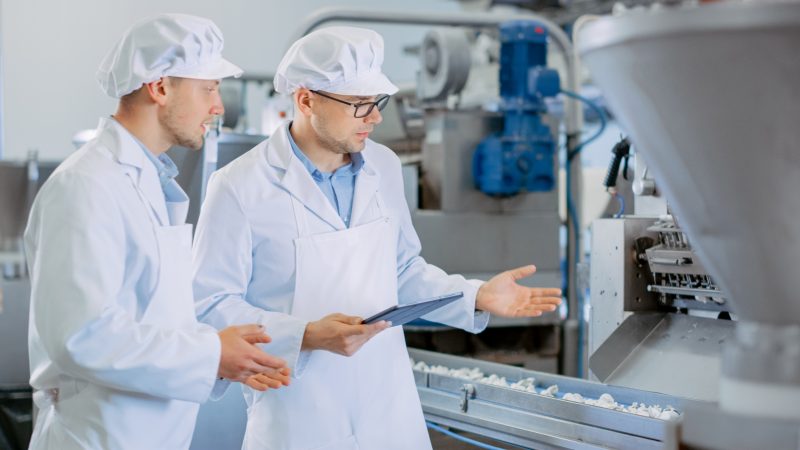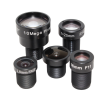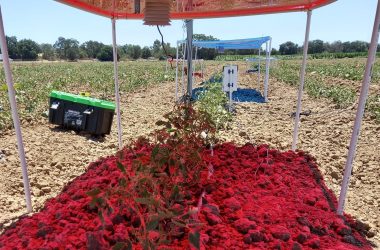Spokesperson: Jodie Curry, Commercial Manager, Fortress Technology
Recent events, especially the Coronavirus pandemic have increased awareness of hygiene compliance. People throughout the food supply chain must accept responsibility for the maintenance of sanitation protocols and equipment cleaning routines. Fortress Technology, a specialist for X-Ray contaminant identification and checkweighing, offers some simple ways to establish compliance custodians. They will embrace food safety starting at the end of food processing lines. They also discuss the role that hygiene habits and equipment innovation play in food safety.
Inspection equipment could become a source to contamination if there are not effective cleaning and hygiene procedures in place. If not properly flushed, cleaning chemicals can also cause food contamination.
Food manufacturers can’t afford to ignore hygiene standards. European standards are already high. However, the pressure since the global pandemic has changed the landscape for a number of food processors, with localised labour challenges and supply chain disruptions further complicating mandatory audits.
The pandemic demonstrated how important it was for food processors to convey confidence and have robust and proactive HACCP and GFSI/SQF protocols in place. It is now up to food processors to ensure that these protocols are in line with evolving consumer and colleague safety, health, and wellbeing expectations.
While price is still the most important factor when it comes to food purchasing, safety has emerged as a critical consideration. A report by Deloitte – The Future of Fresh – summarises this well, citing food safety as having multiple dimensions. Safety for yourself, others and workers who produce food are just a few of the factors that this report addresses.
Calming allergen fears
More than 150 million Europeans are currently affected by chronic allergic diseases. It is predicted that half of the EU’s population will be affected by 2025. Many more suffer from hypersensitivity to particular ingredients. For example, one in 100 EuropeansCoeliac disease affects approximately 3% of the population, but only 3% have been officially diagnosed.
All food and beverage producers are responsible for identifying allergens in their products. This includes isolating them form other allergen-free products that are processed in the same facility. Problems can still arise on the supplier’s side, especially if sourcing from multiple sites or multi-function locations.
One example is that dairy-free products are often still produced at dairy product production sites. Some might not have dedicated dairy free machinery and zones. Although thorough clean-ups are used to flush out any remaining dairy products, it is not foolproof.
In manufacturing facilities that cannot allocate a dedicated line, planning production schedules to isolate allergen-containing products is a common strategy. It is important to separate ingredients when they are being stored. Gluten is a particular concern. Many sites have established separate gluten-free stations as well as change of work clothes for operatives.
Allergen labelling has become more stringent after a number high-profile incidents. The new UK legislation went into effect on October 20, 2021. Known as ‘Natasha’s Law’, businesses are now required to label all food that is pre-packed for direct sale (known as PPDS) with a full list of ingredients and the 14 allergens emphasised in bold.
Customers who invest in Fortress or Sparc Systems xray and metal detector conveyors, checkweighing machines or combination inspection machines may be able to benefit from an advanced label verification system. These label systems not only check for allergen ID codes but also check product descriptions, bar codes and lot numbers. Mis-labelled products are automatically rejected to prevent business-critical events or product recalls.
Making processes habit forming
It’s human nature. People want things to be more efficient, quicker, and better. However, taking shortcuts is dangerous, especially in hygiene and consumer food safety. Inattention to compliance can lead to more shortcuts. It’s not a cycle any food business would or should encourage. This is especially true when you consider that for many, a shortcut leads to a larger problem that takes longer time to fix.
Despite the automation of food processing plants, there are still many manual touchpoints. One of these touchpoints is cleaning manufacturing and inspection processing machinery. Fortress has focused its efforts on creating safer designs to improve hygiene and safety.
This includes eliminating the use of tools on the company’s newest range of food inspection systems. The conveyor is quick and easy to lift off the frame. It can also be disassembled quickly to allow for deeper and quicker cleaning by trained operatives. After cleaning and maintenance, the belt alignment and tension are immediately restored to improve line efficiency.
Routine risk assessments and audits can help control foreign material entering products. External eyes provide a different perspective. Internationally recognized audits adhere to established standards and provide a complete 360 degree review. Some of these information gathering audits blend in-person and virtual observation. These hybrid certification models have been able to achieve success because of the digital evidence of all actions, including maintenance and testing of machinery and documentation of hygiene checks. It requires a shift of culture where everyone in the hierarchy is encouraged be food safety champions.
Optimising cleaning efficacy
This must be done by ensuring that sanitation protocols are documented and included in staff training. Each cleaning procedure must be documented and verified. Regular tests, including swabs from Critical Control Points (CCP), should be performed as part of a validation procedure to ensure that these CCP areas are clean and free from allergens.
In-process contaminant inspector equipment should look for smooth, crevice free contact surfaces on conveyors, pipelines and gravity systems. This is partly to ensure there are no traces of product, allergens, bacteria, or other contaminants, but also to reduce the chance of cleaning agents not being completely rinsed.
When choosing an inspection system, it is important to ensure that equipment has an appropriate ingress protection (IP), according to the washing regime and water pressure.
Metal detection and xray pipeline systems that process liquids, semi-liquids, and slurries can be particularly troublesome due to product residues. Pay attention to the speed at which reject units can removed, cleaned, and reassembled. It should be simple to roll out and disassemble the parts, clean them, and then reattach them to the pumps.
It’s why the Fortress Pump Pipeline Metal Detector now features ultra-hygienic, food-safe Delrin removable plastic tubes. A pipe constructed with no metal ends is designed to be free from bacteria-harboring crevices. Clean in Place mode is another thing to watch out for.
Instead of using unhygienic labels and stickers, all safety symbols, industry-approved markings, and the machine nameplate are laser-etched directly onto each Fortress X-Ray, checkweigher steel cabinet.
Food processors might also be interested in the ability to move machines around the plant. If a machine isn’t fixed to ceilings or frame it is inherently easier and quicker to deep clean. It also allows for easy reconfiguration of upstream processing lines, which is a benefit from flexibility. Balanced systems are a good idea for all mobile machinery. This reduces the chance of the machine tipping when it is being moved. Adjustable casters allow for easy correction of pipe angles in facilities with sloped floors.
Safety for workers can also be improved by ergonomic features. For example, an extension pipe placed on the reject output helps prevent injury during sanitation and maintenance. Electric-powered height adjustment control controls can also help to reduce injuries.
Changing the food safety story
To create the safest food processing environment, it is important to listen to other perspectives and to map hygiene protocols collaboratively, rather than using hierarchies.
Good housekeeping is simply common sense. Food processors are excellent custodians for hygiene and safety. Fortress recommends that you regularly and systematically review potential hygiene hazards in manufacturing facilities as part of a food safety program and risk assessment.










